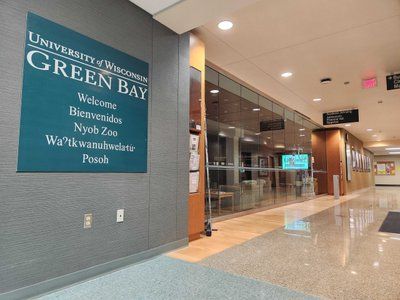By Tom Still
MADISON – Bernie Siegel was a Miami lawyer in 2002 when a cult-like organization known as the Raellians claimed to have cloned a human baby. Siegel filed a motion in a Broward County on behalf of the “baby,” suspecting all along it didn’t exist, and helped to expose a dangerous hoax. He soon founded the Genetics Policy Institute and became a global advocate for stem-cell research based on science versus science fiction.
This year, when Siegel and the Genetics Policy Institute looked around for cities to hold the 2008 World Stem Cell Summit, he narrowed the list to New York, Washington and Madison. He picked Madison – and not because it’s most likely to be inhabited by the remaining Raellians. Siegel selected Wisconsin’s capital city because it’s also the capital of stem-cell research.
The summit is set for September. Other recent events have solidified Wisconsin’s edge as a global leader in stem-cell research and the breakthroughs in human health it will produce:
- University of Wisconsin developmental biologist Dr. James Thomson and his team figured out how to “reverse engineer” skin cells to produce human embryonic stem cells that, so far, act just like those produced from embryos.
- The Wisconsin Alumni Research Foundation, assailed by challenges to three of its six core stem-cell patents, last week completed a clean sweep of victories in the U.S. Patent and Trade Office. The decisions confirm that Wisconsin is a critical stop for anyone aiming to commercialize products that rely on embryonic stem cells.
- Five stem-cell companies have taken root in Wisconsin, including two tied to Thomson and one that moved from Norway in order to be closer to the action.
Just as significant, however, was an announcement that might easily have been dismissed as the arcane stuff of academic insiders. It was the late February disclosure that Thomson will lead the new Stem Cell and Regenerative Medicine Center within the new Morgridge Center for Discovery on the UW-Madison campus.
The news means UW-Madison and WARF have locked up the services of Thomson, and his international reputation, for the foreseeable future. The move not only provides a world-class foundation for continued stem-cell research in Wisconsin, but it signals the private, non-profit Morgridge Institute and its public twin, the Wisconsin Institute for Discovery, will settle for nothing short of research “stars” in its lead scientific positions.
Thomson became the first in the world to isolate human embryonic stem cells and keep them alive indefinitely in culture, a 1998 discovery the journal Science later described as one of the major milestones in the history of science.
His discovery ushered in a new era of human biological research, providing scientists with “blank slate” cells capable of becoming any of the more than 200 specialized cells in the body and offering researchers a rare view into the earliest stages of human development. While cell transplantation therapies have yet to be developed, human embryonic stem cells are already powerful research tools that provide scientists accurate models of human disease and a new way to test drugs more effectively in living organisms.
Nearly a decade after his initial discovery, Thomson made world headlines again in late 2007 when he and other UW researchers turned skin cells into embryonic stem-cell equivalents. Because the new cells (called induced pluripotent stem cells) are not derived from embryos, the discovery may close one chapter of ethical and political conflict surrounding stem-cell research. Scientists believe the iPS cells may one day replace the use of human ES cells as both research tools and therapeutic agents.
As a director at the Morgridge Center, Thomson will keep his faculty appointment and his physical “moving day” sometime in 2010 will take him no farther than across Madison’s University Avenue. The real change is the company he will be allowed to keep – starting now.
Thomson and his team will be able to bring in other international stem-cell and regenerative medicine scientists to advance study of possible diagnostics, therapies and even cures. In addition to the acclaimed team of stem-cell scientists already on campus, Thomson will be able to invite others from around the world for extended periods. Think of Thomas Edison’s Menlo Park with visiting biotech luminaries.
It’s all in keeping with the mission of the $150-million Wisconsin Institutes for Discovery, which is designed, physically and otherwise, to allow scientists from multiple disciplines to work together on projects that often fuse biology with math, computer science or engineering.
Still to come: Scientific directors for bioengineering, computational biology and other vital centers within the Institutes for Discovery. By securing Thomson to run the Stem Cell and Regenerative Medicine Center, a high bar has been set for those remaining posts. No Raellians need apply.
Still is president of the Wisconsin Technology Council, the non-profit science and technology advisers to the governor and the Legislature. He is the former associate editor of the Wisconsin State Journal in Madison.
###
Click here to read more about the World Stem Cell Summit to be held in Madison.





